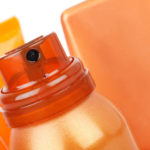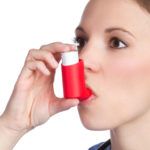[su_box title=”Here’s what you need to know…” style=”default”]
- Sunless tanning utilizes a chemical called DHA to bronze the skin
- Sunless tanning creams do not cause cancer
- Caution should be used not to inhale spray tan mist
[/su_box]
For those wanting a sun-kissed glow, spray tans or sunless tanning may be the answer. These products do not use ultra-violet lights to produce a tan, so there is no risk of skin cancer.
Having the perfect tan is not just a fad, people have been tanning for decades and the first tanning bed was invented in 1970.
Those ultra-violet rays that oxidize melanin and gives that bronze hue are also the leading cause of skin cancer.
While tanning beds do not emit the same amount of ultra-violet rays as the sun, studies showed repeat exposure still caused skin cancer. More cases are being diagnosed very year from tanning beds because unlike sunbathing the beds can be used year round.
Use the link above to compare health insurance quotes in your area!
How was spray tanning discovered?
Sunless tanning lotions and spray tans use a chemical derived from sugar known as Dihydroxyacetone (DHA). DHA was discovered in the 1920s by German scientists.
When the chemical came in contact with the skin accidentally, they noticed a brown hue developed. The color change could not be washed off with soap and water.
Eva Wittgenstein was the first person to experiment with DHA as a tanning agent. She was a scientist working at the University of Cincinnati when she discovered the effects of DHA on the skin.
It was being used to treat children with immune diseases when she noticed the children appeared to have been sitting the sun following treatments. Wittgenstein experimented with apply DHA to different areas of her skin to see how it reacted.
In 1960, the first sunless tanning lotion hit the market. You applied the product overnight and washed it off the next morning.
These lotions did not work quite the way people thought they would. Many people were left with orange skin. Because of this, sunless tanning lotions did not become a big seller.
DHA was registered with the Food and Drug administration in 1973 and in the 1980’s manufacturers revamped the sunless tanning lotion products.
Using better ingredients allowed them to produce a product that gave consumers the desired result, tan skin.
Since this time, people have been in search of perfect application methods. Hand applying lotions left you with streaks that were not visible until the color fully developed.
Spray tanning became an ideal solution. The tan is sprayed on to ensure even results.
How does spray tanning work?
Most spray tanning solutions contains DHA. It’s this chemical that binds with dead skin cells in a chemical reaction that causes it to change colors. It is not a dye and requires no ultra-violet light. It does take a few hours for the results to develop.
Most solutions will also contain a temporary bronzer. This allows the customer to leave with a tan while the DHA processes. It also helps technicians see where they have applied the product. These bronzers will wash off as soon as you shower.
Spray tanning is done either by a machine that mists the whole body evenly with tanning solution or by a technician who uses an airbrush to apply the solution.
They both have their advantages depending on your budget needs or desired results.
How much does it cost?
Booth tanning is the most economical. Similar to tanning bed you will walk into a private booth where you will have an automatic sprayer.
After you are treated, you dry off and are done. Salons can offer this service at an economically friendly rate because it only takes about 10 minutes per customer.
Airbrushing is more expensive because you will need a trained technician to apply the solution. This option is popular for people needing a special occasion tan.
Do I need professional application?
Many technicians are trained in contouring with the tanning solution.
They can accentuate or minimize the appearance of certain body areas with different shades of the solution.
Spray tanning only lasts a few days to a few weeks. You will have to reapply continuously to maintain your tan.
In addition, spray tans and sunless tanning lotions do not provide any protection from the sun or risk of sunburn.
Spray tanning has become the standard for safe tanning because it does not pose the risk of skin cancer traditional tanning and tanning beds do. Spray tanning solutions may still pose some dangers though.
The active ingredient DHA has been shown to cause skin irritation or allergic reactions. People have experienced rashes, inflammation, and contact dermatitis.
This can be very painful and itchy. It is more common in people with sensitive skin.
Are there any associated risks?
Spray tanning booths may pose risks for people with asthma. The booths use pressurized sprayer to dispense the DHA. This can make it hard to breathe while you are in it.
The inability to get fresh oxygen has triggered asthma attacks and caused some suffers to pass out in the booth. Tanning solutions should never be inhaled.
It can irritate the mucus lining of the nose and throat so if you have asthma, you should avoid spray booths.
You should always wear tanning goggles in the booth. If the solution gets in your eye, you may experience pain, itching, burning, and redness. You need flush the eye with clean water immediately.
Use our FREE online tool to compare health insurance quotes today!
[su_spoiler title=”References:” icon=”caret-square” style=”fancy” open=”yes”]
- http://www.webmd.com/beauty/sun/tanning-myths-whats-true-whats-hype
- http://www.huffingtonpost.com/robert-applebaum/history-of-fake-tanning-s_b_3818206.html
- http://www.mayoclinic.org/healthy-lifestyle/adult-health/in-depth/sunless-tanning/art-20046803
- https://en.wikipedia.org/wiki/Sunless_tanning
- https://en.wikipedia.org/wiki/Sun_tanning
[/su_spoiler]





